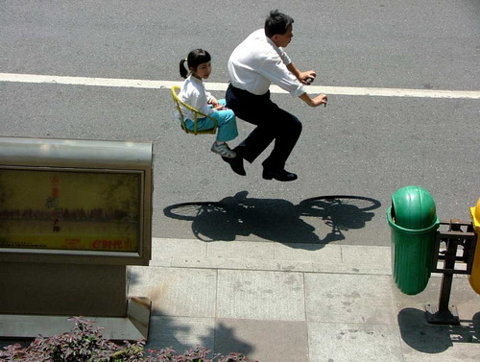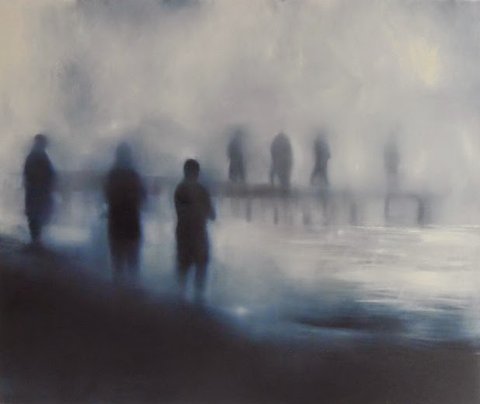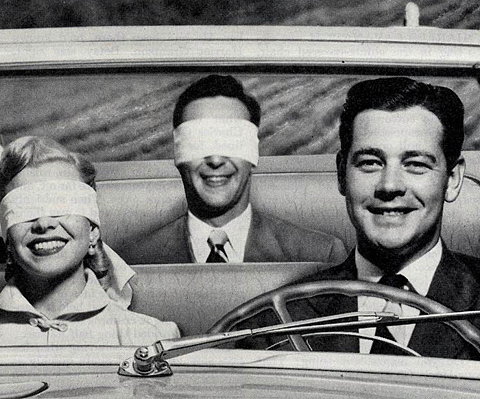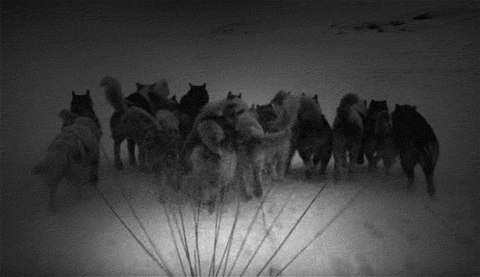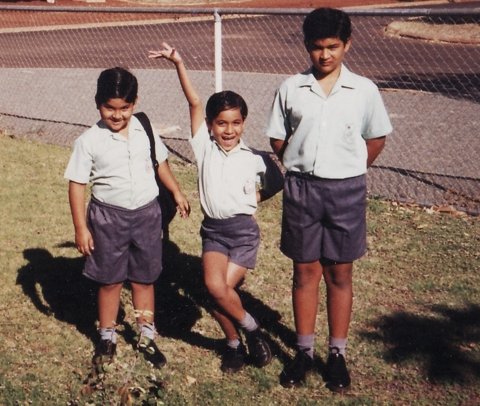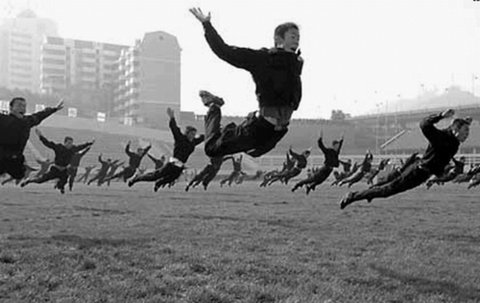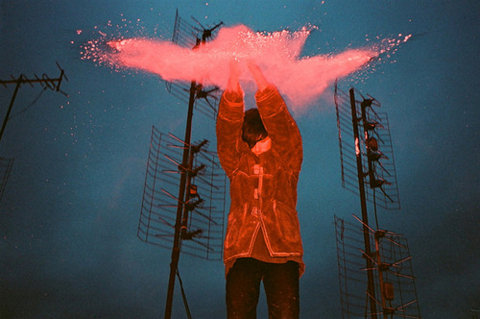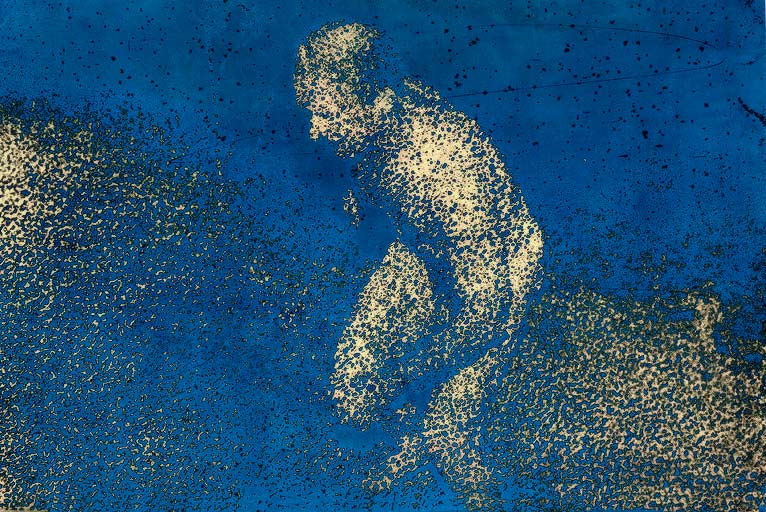After the endless hand-twisting debates around race in Canada’s artist movie portals – in production co-ops, in distribution joints, in cinematheques and fests – why are they still so very white? This was a question posed at an official gathering in spring 2018. I didn’t attend, but have been asked to provide a follow-up document. Hoping to summon a temporary community here on the page, I gathered clips from recent Skype chats with folks who were there, along with interviews I made with artists long ago. And some irresistible quotations from folks who have weighed in on these burning questions in the past.
“In my class and place, I did not see myself as a racist because I was taught to recognize racism only in individual acts of meanness by members of my group, never in invisible systems conferring unsought racial dominance on my group from birth.” Peggy McIntosh (White Privilege)
“I have spent much of my studies searching for the right question… by which I might fully understand the breach between the world and me.” Ta Nehisi-Coates (Between the World and Me)
Analogue Conference
On March 23-24, 2017, the “Analogue Film Gathering” in Calgary was sponsored by the Independent Media Arts Alliance who invited a cross-country sampling of film and video co-ops, artist collectives, distributors and independent media artists. After a pre-gathering questionaire was sent out, four topics provided a compass: production, exhibition, conservation and most difficult of all: equity. At an open discussion, which began with a difficult and condemning silence, BIPOC (black, Indigenous, people-of-colour) artists and administrators spoke about their marginalized status in a sector that remains largely white. As usual, white people didn’t weigh in, as if the systemic problem of racism in the media arts was not their problem, or simply didn’t exist. When I approached white artists after the conference to contribute to this interview collage, all but a couple refused.
Lindsay McIntyre: I thought the conference brought the issue of diversity to people’s attention who might not have thought it was important. I think a number of people responded (to the pre-conference survey) by saying, “we don’t have a problem.”
Cecilia Araneda: Experimental filmmaking in Canada is very white, and so lacking in Indigenous voices that it’s shocking to me. I don’t think anyone is consciously excluding people, but the dangerous phase is not being aware of the exclusions that are occurring.
Rhayne Vermette: I think I was the only independent practicing artist there. Everyone else was primarily related to organizations — mainly administrators, some filmmakers with jobs — professors, industry, etc. Of course they’re going to have equity on the agenda. Administration is one of the primary devices used to colonize Canada, now we have a group trying to come up with even more systems. As soon as you put boundaries on the discussion it becomes part of the colonial problem… The idea of an agenda and an administrative conference is problematic to me. There are better ways to speak to each other.
Phil Hoffman: There were mostly white people at the meeting. The equity discussion was about how could we make this better. It was fairly intense.
Karen Tisch: There’s a difference between diversity and equity. Diversity is the presence of multiple communities, equity is the next step, ensuring that everyone has the same opportunities. That requires a change in power dynamics. Those in traditional places of power need to share power. Institutions which were founded on a set of values need to renegotiate those values.
Zainub Verjee: Providing hour-long spaces to talk about complex issues like equity are simply another silencing project. The box has been ticked, we’ve done diversity, but it’s a veneer. These conversations aren’t taking away the silence, they’re not going to change anything. When people sell their houses they are dressed and staged for potential buyers. These forums are a way of staging equity.
White
When my mother was looking for a new place to call home she ruled out a couple of country destinations because she felt that as a person of colour, she would be unwelcome. But sometimes the unwelcome mat is not so clear, particularly when it comes to critical questions of white privilege. How can we talk, even in the fringe arena of marginalized movies where we are already uninvited and unwanted, about our own colour blindness, and the pervasive hiring and exhibition and promotion of whiteness?
Paul Wong: It was a white scene, internationally, nationally and locally. Absolutely. But it didn’t strike me until I went to China with my mother in 1982. I remember being in Hong Kong thinking, my god, Chinatown never ends! I can’t cross the street and leave it behind.
Cecilia Araneda: Canadians are more polite than Americans in our expression of white supremacy. People who have the privilege of whiteness may not have asked for that privilege but they benefit from it in ways they don’t comprehend. It’s important for people to speak up even if they are white and privileged, and start carrying that burden. When these topics are brought up, everyone else steps back.
Peggy McIntosh: I think whites are carefully taught not to recognize white privilege, as males are taught not to recognize male privilege. So I have begun in an untutored way to ask what it is like to have white privilege. I have come to see white privilege as an invisible package of unearned assets that I can count on cashing in each day… obliviousness about white advantage, like obliviousness about male advantage, is kept strongly inculturated in the US so as to maintain the myth of meritocracy, the myth that democratic choice is equally available to all… I have met very few men who are truly distressed about systemic, unearned male advantage and conferred dominance. (White Privilege: Unpacking the Invisible Knapsack” first appeared in Peace and Freedom Magazine, July/August, 1989)
Reni Eddo-Lodge: Colour-blindness is used to silence talk about structural racism while we continue to fool ourselves with the lie of meritocracy… They’ve never had to think about what it means, in power terms, to be white, so any time they’re vaguely reminded of this fact, they interpret it as an affront. Their eyes glaze over in boredom or widen in indignation. Their mouths start twitching as they get defensive. Their throats open up as they try to interrupt, itching to talk over you but not to really listen, because they need to let you know that you’ve got it wrong… They truly believe that the experiences of their life as a result of their skin colour can and should be universal. I just can’t engage with the bewilderment and the defensiveness as they try to grapple with the fact that not everyone experiences the world in the way that they do. (“Why I’m no longer talking to white people about race,” The Guardian)
Judy Rebick: White people think the ultimate liberalism is to be colour-blind. “It doesn’t matter to me what colour you are, I don’t see it.” The absurdity of that statement struck me at a book launch when I asked the men to let women speak first. The first person at the mic was a young man who said, “I don’t see gender.” If we don’t see race as important, we don’t have to do anything to stand up against racism in our organizations.
James Baldwin: Because they think they are white, they do not dare confront the ravage and the lie of their history. (On Being White… and other Lies)
Entitled Aesthetics
A couple of years ago writer and former Images Fest artistic director Amy Fung weighed in on the question of “entitled aesthetics.” She was newly hired, and a little surprised to see the kind of artist’s media that was being shown in her new Toronto home.
Amy Fung: So much of what I see harkens back to a legacy of experimental artists and their works and aesthetics from the 60s and 70s… By this term, entitled aesthetics, I am speaking to the lineage-chasing artists and curators who choose to regurgitate canonical aesthetics from decades past… For the genre of experimental cinema — like Abstract Expressionism in painting, or like Beat poetry in literature — the canon has been filled by a very narrow demographic that benefited from a post-war condition that turned towards abstraction in form and content as a reflection of the world, and at the base of this, of course, is a systematically racist, sexist, and ableist society. It wasn’t only white men doing these things, but only they are celebrated and remembered, and as a result, continually re-hashed to stretch their legacies further. (http://postspecificpost.tumblr.com/page/5)
Lindsay McIntyre: I nearly whole-heartedly agree with Amy’s statement. Her words are harsh, but necessarily so. It’s something that’s happening not just in Toronto or Canada but worldwide. The only thing that gets my hackles up is the suggestion that a film work that shares any aesthetic with a work made within that canon is automatically “repeating an exclusionary history of systematic oppression.”
Rhayne Vermette: I totally agree with Amy. At the WNDX Festival we go through an open call every spring, and there’s an absolute regurgitation of aesthetics. Oh, the layering again. Year after year, most of the work we get is from guys — primarily white. I wonder if a lot of guys making this work contemplate where it comes from? The work I do is unclassifiable, woven from various forms of storytelling. I hate going to film festivals because it’s all these guys toting each other, while the women are on the outskirts. I think there’s potential to blow up experimental film.
Leslie Supnet: The experimental moving image scene in Toronto is quite homogenous with respect to curatorial taste and practices. What dominates and gets shown here belies the diversity of artists that live and work in the city. I’m unsure if the popularity of a certain kind of work (slow, structural, humorless, silent, poverty porn) has to do with just whiteness, or a combination of whiteness, maleness, and canonical value. Works that follow a trajectory of accepted aesthetics valued in the world of art is what I see a lot of in the city in terms of programming. For instance, to my knowledge, there have been no Aboriginal Canadian filmmakers shown in TIFF’s Wavelength series.
Clint Enns: I agree with Amy’s argument in principle and more importantly with the systemic flaws she has observed. I differ with Amy in the fact that I don’t think this is an aesthetic problem, nor do I believe individual artists should be punished for pursuing their artistic impulses, whatever they look like. It is not the aesthetics that are the problem, but the conservative nature of the work that is too often being programmed and written about. There is a much broader range of experimental work being produced than those works that follow in a lineage from the canon and this work is, for the most part, being ignored. I think this is a problem with how the avant-garde has been institutionalized.
Jorge Lozano: I have so little to say about formalism. Initially, it made sense and still does: to explore, manipulate, intervene into the elements that make the materiality or “what it is” (film) and to liberate it from the constraints of narrative representation. However, its aridity and deviance from those initial 60s concerns is the result of a kind of repetition that doesn’t generate differences. It becomes torturous, lazy and predictable. Bad fashion. Also, the lack of consideration of the social implications as part of the elements that are inherent in the materiality (film) has narrowed the ontology of the material. We should not only consider the “what it is” (celluloid) and the “what it can be” (altered chemically, scratch, etc) but also pay attention to the “where does it come from” (labs that make it, workers, toxins, etc) which will add the social-political content that most experimental film and video lack and that our colleagues use to torture us with their repetitions of the same techniques and their self-indulgence.
Lindsay McIntyre: Sometimes I feel like a white male filmmaker because I champion experimental film.
Cecilia Araneda: Film production centers are still white, it’s not only the staff, but the membership, artists who receive awards, the people who are programmed. The Winnipeg Film Group had its provincial funding cut for that reason. Many centres have been called out on equity issues over the years and they’re paying attention, but there are entitled cultures of experimental film that remain exclusive. They don’t permit others entry.
Lisa Theriault: I wish there were other ways to get into spaces. I wish we could give people more chances even if we’re not sure we know what they’re doing. I think we need to get more creative about how these decisions are made, and it needs to happen early in artists’ careers. I got into film through my male friends. There need to be new role models, we need to see examples of ourselves doing these things. The white male canon is already there. How do we create a new canon?
Archive
So perhaps the problem is not the artist, but the frames that artists appear inside? As the media exhibition scene has splintered into fest fragments, the fringe portals have been seized by white people most of all, and not unsurprisingly, they have programmed other white people, and more than occasionally insisted that the work should be analog. Is doubling down on analog another form of white gatekeeping, of ensuring that the avant pasture remains a mostly white playground? Should it come as a surprise that one of the only non-white fringe media programmers in the city is the one to call out this practice, and that white programmers never write about race, or their own programming practices in relation to race? Isn’t this yet another instance of the “invisible whiteness” that has plagued fringe media and other white-led movements for generations already?
Jorge Lozano: When I read the words history or archives I immediately think about what was omitted or misconstrued. Perhaps the history of archives and the history of history is the exclusion of non-official intensities present at the time. For instance, the book ‘Explosion in the Movie Machine: Essays and Documents on Toronto Artists’ Film and Video,’ I am not even listed. I am using the book to build sculpture. I am installing a door lock on it.
Rhayne Vermette: (At the Analogue Film Conference) we talked about archiving things, keeping work in vaults. Yesterday I was reading what Tobasonakwut Kinew was saying about rock paintings that are being painted over all across Canada and it made me wonder why we’re up in cahoots about saving art and archiving it. It’s a particular lens that decides what we’re saving. Isn’t most of the analog work made by white people? What makes a work worth saving?
Cecilia Araneda: The experimental film scene thinks that the fight is against the mainstream and doesn’t want to put a mirror up to itself and realize that there is an important struggle for diversity that’s missing within its own community.
Christina Battle: A history made of male white heroes is largely the result of those who have exhibited, documented and written about the practice. The less women are written about, the less impact our presence has historically. Art making is still a practice of privilege, if not economically then ideologically.
Lindsay McIntyre: Equity and inclusion is a big problem in the media arts in general, but particularly because film has always had close ties to experimentation and the underground, where marginalized voices can actually be heard, it’s particularly important that we, as a community, address the problems created by what can sometimes feel like an elitist art form. Artists have an obligation to take apart structures that are created by conventions. It’s important to make tools accessible to everyone, not just the privileged few.
Lisa Theriault: What is valued becomes history. There need to be new ways of creating value, and valuing work. It needs to come from a more authentic view that isn’t rooted in what came before us and romanticizing the past… I’m an emerging artist from Atlantic Canada, and I see a lot of barriers around production grants and getting into festivals and exhibitions. The submission process is a lot of work, often you have to pay fees, and it’s all formatted the same way. If you have practice doing these things then you can manage, but if you don’t know others who are similarly engaged, those structures (arts councils, residencies, exhibition spaces) aren’t accessible.
Zainub Verjee: How would new Canadians read/view the work of Group of Seven? As part of the post-war nation building process, these works were furthering the idiom of National Culture as per the Massey-Lévesque report. And as we know, that Canadian landscape whitewashed the Aboriginal people! Ontologically speaking, Aboriginal people are at the centre of our culture!
Peggy McIntosh: To redesign social systems we need first to acknowledge their colossal unseen dimensions. The silences and denials surrounding privilege are the key political tool here. They keep the thinking about equality or equity incomplete, protecting unearned advantage and conferred dominance by making these subjects taboo. Most talk by whites about equal opportunity seems to me now to be about equal opportunity to try to get into a position of dominance while denying that systems of dominance exist. (White Privilege)
Some History
Karen Tisch: There was a huge grassroots movement based in identity politics that created culturally specific organizations, publications and alternative spaces like the Black Film and Video Network or Desh Pardesh to provide a sense of community or alternative space for people who felt excluded from mainstream artist-run centres. It’s interesting that a lot of those initiatives no longer exist… There are still quite a few culturally specific festivals like Reel Asian or imagineNATIVE which have flourished and evolved. There aren’t culturally specific production co-ops; these initiatives occur primarily in exhibition.
Zainub Verjee: We had to create counter publics in counter-spaces. Cultural and aesthetic questions are political questions… While some orgs have survived such as the Reel Asian Festival, they’re more commercial. It’s like product segmentation! It is unfortunate that organizations have been shepherded into being more commercial because of the neoliberal logic of managing national culture. Diversity is commodified and hence commercialized as a product.
Kirsty Robertson and J. Keri Cronin: Minquon Panchyat (Rainbow Council) was part of a movement in the late 1980s and early 1990s that aimed to draw attention to some of the systemic inequalities in the Canadian cultural scene. This included the international film and video conference/symposium In Visible Colours (1989), the film and video conference/workshop About Face, About Frame (1992), the 1993 conference It’s a Cultural Thing, and the 1994 Writing Thru Race Conference. (Imagining Resistance: Visual Culture and Activism in Canada)
Jorge Lozano: The Shooting the System conference (1989) happened at a moment when many excellent artists and art-ivists from diverse cultural communities, including ”lesbians and gays,” started to reaffirm their valuable presence by denouncing and making public issues of discrimination and exclusion in the Canadian art scene. Many people of color communities started to make visible the historic hegemony of anglo arts administrators and artists. The conference triggered structural changes… Sadly many of these organizations disappeared and many of the art-activists have joined the status quo.
Lindsay McIntyre: Historically, Canada’s film production centres are 20-35 years old. FAVA (The Film and Video Arts Society of Alberta) has one founding member who is Métis, and as far as I know, the rest are white. There certainly isn’t any talk about a culture of whiteness, maybe that’s a conversation that needs to be started and taken apart and looked at from its roots.
Cecilia Araneda: The film production centres are very important to the communities they’re in. But after 40 years, this system is no longer emerging even though there is always a financial struggle. What they are, is what the larger communities immediately surrounding them want them to be. Equity within the sector is not often in the forefront of the minds of people focused on developing their own careers. More equity-specific entities/organizations are needed.
The Institutionalization of Equity
Karen Tisch: Equity came to the fore in the 1990s when people of colour tried to change Canadian institutions. Richard Fung, Itah Sadu, Margo Kane and others were active in the Racial Equity Committee at the Canada Council trying to ensure there was representation of diverse communities on peer assessment committees (juries).
Sara Ahmed: The push to see racism as institutional and structural comes out of anti-racist and Black politics; it is a direct critique of the idea that racism is psychological, or that it is simply about bad individuals. (The Non-Performativity of Anti-Racism)
Patrice James: I’m one of the few persons of colour who are in a managerial position in media arts in Canada. There’s an expectation that we’re more liberal, progressive, and inclusive because we work in the arts. But I don’t think we can expect to have more inclusive practices if many don’t feel there’s an equity problem. I think the sector talks about change, but we’re not good about mobilizing.
Adriel Trott: People talk about “getting sick of hearing about” diversity and racism and make those who keep bringing up the problem the problem. To be uncomfortable in the institution because of its failure to be diverse is to make the institution have a problem, to be the cause of the problem, instead of the institution being the cause of the discomfort it causes due to its inability to decenter itself… The notion that institutions become more concerned with their preservation than their proclaimed goal now resounds from every corner. (The Trott Line, Dec. 2014)
Zainub Verjee: Multiculturalism has been constructed by white people for us to fit into. The way we have been spoken about and given a space to be in is constantly silencing us… We have lost our agency because we’ve accepted the neo-liberal management effect. The culture sector has been completely co-opted into the neoliberal instrumentality of public policy. We’ve become clients of the funding councils and left artists behind.
Karen Tisch: There’s a desire to see change, people are saying the right things, but are they truly dedicated to a process of equity? I mean: organizations say they want diversity, but once they’ve allowed others into the house, it may change the way the house functions. With these new perspectives, we may not operate the way we did before. Embracing diversity fundamentally changes the way we operate because people bring different cultural understandings and worldviews into the space. It’s not just about adding a couple more people into the mix and we’re done. It’s about sharing power, that’s where we’re stuck.
Rhayne Vermette: How much of your time is spent in administration — running money through systems of rules? Look at the conference — there’s a lot of feasibility talk, trying to find the right mood, talking and talking. Nothing happened, it just keeps the IMAA (Independent Media Arts Alliance) people busy. There‘s a lot of speculation about what could happen but the administrators keep themselves busy by planning conferences and nothing changes… I’m worked up about the Canada Council, they have larger sums of money for Indigenous artists and I love that, but the whole application process is severely fraught and classist. The fact that you need internet to apply is beyond fucked because a lot of Indigenous communities don’t have internet access. And then there is a requirement for non-profits to submit proposals in English and French. I don’t think they understand the consequence of allotting official languages… My Cree teacher is putting out a Cree workbook with her own money. She can’t get into these systems, the systems aren’t even looking for her, that’s the problem. The system is talking in Calgary at a conference, staying in hotel rooms and eating catered meals and that’s not the way to resolve things. If you’re looking for communities you want to engage with, you’re making it more difficult if you’re speaking in systems. The process is exclusive, not inclusive.
Karen Tisch: The question is: do people of colour want their own institutions? In some cases yes, they want spaces to have dialogues amongst themselves. But often they want to be part of the “mainstream” conversation, though 50% of Toronto identifies as part of a visible minority, so what’s a minority? In terms of the funded art scene, we’re still seeing organizations operating the way they did twenty or thirty years ago. Those places are still receiving most of the money from the funding system. What if those organizations felt they needed to reflect the reality of Canada today? That may require a radical rethink of what the organization is, or even what art is.
The Double Burden as Double Bind
Wayne Yung: I do feel a certain responsibility to present gay Asian men onscreen, and am often critical of others for using all-white casts, especially when it’s not essential to the concept. I don’t believe that a nonwhite director should be “required” to cast nonwhite actors, but if we all continue avoiding using nonwhite actors, then we simply perpetuate the larger system that makes us invisible.
Zainub Verjee: Artists of colour are received mainly as political representatives, they are expected to speak for and be accountable to their communities… Paul Wong is celebrated for his Asian-ness, he’s accepted and put into a box. But on the other hand John Greyson doesn’t carry the burden of being White. He has a different freedom to make his work. Unfortunately, people like me can’t get out of such a bind, where we are always seen to be “making ethnic work.” That’s how we are staged.
Karen Tisch: Artists like Richard Fung and Paul Wong have mentored so many people. They’ve pulled generations of people along with them. But the institutions haven’t necessarily responded in kind. It’s like the artists themselves have to do that work. Not only do they have to break down their own barriers, and make their own work, they have to pull up a whole generation of other artists behind them because no one else is helping, even the alternative artist-run systems. That’s an ongoing problem.
Rhayne Vermette: Talking about equity falls on the backs of specific artists over and over again. This can be a heavy daunting thing for an artist to do. In addition to everything else you do, you have all these responsibilities to the community. I’m Métis and the more I inquire into what that means to me, the more I feel that responsibility whole-heartedly.
Kent Monkman: My work is about presenting another perspective, I’ve been going back and reclaiming the landscape from these European paintings, inserting lost narratives, the histories that have been obliterated, and the absent mythologies.
Dana Claxton: It’s my ancestral responsibility to clear this history up and make a more honest telling of it, while at the same time, un-dehumanize Aboriginal people.
Lindsay McIntyre: There was a Métis artist who spoke about always being chosen as the Indigenous rep for various events, juries, etc. There is an expectation that you are an appropriate spokesperson because of your background. This is happening more as organizations want to become more inclusive. We get into labelling people, which isn’t always something that they want… I’m of mixed race, a person of Indigenous and European background. It’s interesting to be singled out as a voice for things like that. Patrice James felt that strongly, perhaps because she’s very visibly a person of colour.
Patrice James: I’m a woman of colour living in a predominantly white society. It doesn’t matter whether I’m working in or out of the media arts. I can’t change my surface. I get upset from time to time whenever I encounter racism, veiled or otherwise… Deanna Bowen made a powerful keynote speech for the MANO (Media Arts Network of Ontario) conference a couple of years ago. She expressed concern about inclusion in the media arts, and noted that things hadn’t necessarily significantly improved since she started. She was emotional and it was very quiet. I didn’t say anything because I feel like I’m always the one who is expected to stand up and say something. How does this person who is so respected and has contributed so much to the media arts feel so isolated and disillusioned? How am I going to be part of a change if she couldn’t make that change?
Karen Tisch: When you’re faced with issues around equity there’s always going to be anger and rage on the part of people who feel like they’ve been excluded and oppressed. One needs to accept that rage. People need to understand that those emotions exist.
Cecilia Araneda: When artists try to address systemic misogyny or racism it’s always the victims who are asked to address the problem, educate the room, striving to be polite and super nice to explain what their perspective is… We are also trying to develop careers as an artist and/or cultural workers so we’re shouldering a double burden. A lot of pressure is put on people who are fixing the problem of racism for everyone else. It’s too much to ask.
The Art of Listening
Corin De Freitas: Not listening or unhearing is one of the primary techniques of whiteness. (Society and Space)
Rhayne Vermette: The act of listening is really important because then we can start shifting perspective. There’s a lot of guilt bred into Canada, and being an artist you become hyper aware of the land you call home and its history and Native exclusions. One of the ways to deal with that guilt is to say that’s not me, it happened before, I wouldn’t have done that. But listening is one of the first steps.
Karen Tisch: White people fear engaging in the conversation. They fear they’ll say the wrong thing, or that they’re not well informed enough, maybe they don’t know how to deal with the emotions that marginalized people are bringing into the room. Maybe they think it’s not their problem… There needs to be an understanding that the conversation is messy and wrong things can be said, but it’s worth it. It’s worth engaging in the complex conversation that equity requires. Because the benefits of achieving a more equitable media art sector and society outweigh any discomfort or difficulty we might experience along the way. We need to listen to each other.
Claudia Rankine and Beth Loffreda: What white artists might do is not imaginatively inhabit the other because that is their right as artists, but instead embody and examine the interior landscape that wishes to speak of rights, that wishes to move freely and unbounded across time, space, and lines of power, that wishes to inhabit whomever it chooses. (The Racial Imaginary)
Reni Eddo-Lodge: The journey towards understanding structural racism still requires people of colour to prioritise white feelings. Even if they can hear you, they’re not really listening. It’s like something happens to the words as they leave our mouths and reach their ears. The words hit a barrier of denial and they don’t get any further. (Why I’m no longer talking to white people about race, Guardian)
Zainub Verjee: This work has been going on for 40 years but listening is not happening. Listening is an endangered social practice.
Some Questions
Most of all I think it’s a question of voice. Who gets to speak? Who has already been framed by our culture as someone who should be speaking? When I very occasionally step into an art school class I notice there are hardly any white students there at all. Whiteness is reserved for the school’s top administrators, the managerial class and of course the faculty. All of those brown and black and Indigenous classroom faces give me hope. Soon enough they will graduate and overturn the entire artist-run system, and old problems can make way for new ones. Or will they? Will the whites who hold power actually step down and allow the transformation to happen?
Zainub Verjee: In Canada and in Toronto there’s been a huge demographic shift that is not reflected in the artmaking scene which is still very white…
Richard Fung: While I am one of several openly queer faculty and senior administrators, there are only a handful of racialized or Indigenous professors. The OCADU (Ontario College of Art and Design University) faculty composition is out of sync with the city’s demographics, which in the 2011 census put Toronto’s white population at just 50%. (“A Bastion of Straight Male Privilege: OCA in the 1970s,” Any Other Way)
Cecilia Araneda: If an artist-run centre doesn’t look like the city they’re in, that means there’s something wrong… Winnipeg has the highest percentage of Indigeous people in any Canadian urban centre, and a thriving Filipino community, and this is just not as reflected in the Winnipeg Film Group as it should be, in spite of everyone’s best intentions to diversify. People who go into film are 75% white males between the ages of 18-35. Who gives themselves permission to access these spaces? Who is welcome? Who is granted funding and opportunities?
Patrice James: Ottawa is mostly white. And, even though IFCO (Independent Filmmakers Co-operative of Ottawa) is an open centre — anyone can come and join, they just have to pay the membership fees — most of the membership is white, with a small amount of non-white members.
Lindsay McIntrye: FAVA serves northern Alberta, but our diverse population is not reflected in the membership of the co-op. FAVA has open arms, anyone can become a member, but many marginalized populations don’t even walk through the door.
Judy Rebick: The racism of an all or almost all white organization is even blamed on people of colour. “We’ve outreached but they don’t come.” The very idea of outreach is another form of colonialism. Come into our organization, join us in what we think is important. Adapt to our ways, learn our techniques, value what we value.
Jake Trailers: There’s this organization called the National Screen Institute. They get money because they work with emerging Indigenous film talent, getting them started. The first day there they say: if you have “National Screen Institute” on your CV you’ll do well. It’s a crazy process of assimilation into industry-grade filmmaking. Inevitably a large number of participants begin to loathe the institution and the hierarchy held over their heads. In conversation it once came up with a participant that it’s an administrative form of a residential school. They have a limited view of what storytelling is, they bully you into doing boring CBC docs… Shouldn’t an institute devoted to “new voices” be completely open to how stories are both told and created?
Karen Tisch: I did an equity sounding at the Canada Council a couple of years ago, where we brought together mid-career artists from all disciplines to talk about equity. One of the fundamental issues was training. Art schools, film and video programs, have they changed? No, not fundamentally. The curricula are still focused on white Euro-centric aesthetics. You’re starting to see a few Indigenous professors, but it’s been a very slow process changing who is hired, what kind of work is being shown, how students are influenced… Stan Douglas has shown in many large international art events, but has that fundamentally changed the gallery access of African-Canadian artists, or even the numbers of black Canadians entering art schools?
Judy Rebick: We don’t even know our history, let alone teach it. We live in a mythical country that tells us there were two founding nations, that unlike the Americans we didn’t kill the Indians or build our wealth on slavery. The difference is that we didn’t celebrate our genocide against Indigenous people, we hid it, instead of building wealth on slavery, we built it on indentured migrant workers starting with building the railways. An African-American friend told me in the 1970s that he preferred the overt racism of Americans to the hidden racism of Canadians. It took me 30 years to understand what he meant.
Zainub Verjee: What is acceptable is always based on Eurocentric values and aesthetic criteria, but our national culture can no longer be defined by the aesthetics or interests of the “two founding nations.”

Closing Thoughts
Rhayne Vermette: A lot of not-for-profits came out of mandates to provide support for artists, but as they become more prominent they require more money to maintain their own structures. It’s always on the artists’ backs. It’s time to start thinking about taking these structures apart.
Karen Tisch: There is a division between what’s happening on a grassroots community level and what’s happening in the formal art community. One needs to find ways to bridge that… If organizations don’t seriously reflect on how they operate and become more inclusive they’re just going to die. They’re going to become outdated because society isn’t static, it evolves and changes… If organizations don’t seriously reckon with issues of diversity, equity and pluralism they will become increasingly less relevant. You’re already seeing this with organizations that have been unable to diversify their programming; audiences for theatre or dance for instance are still fairly homogeneous (white). As society changes those organizations realize that they’re facing a huge challenge. Who is going to come to see their work?
Tom Perlmutter: What we need now is not one particular policy patchwork fix but the new Massey-Lévesque for the 21st century. We need to rethink the fundamental conceptual framework that can give rise to the cultural policies that will serve us for the next 60 years. (Toronto Star)
Zainub Verjee: The Art Gallery of Mississauga has taken a bold move with their existing collection. They’ve decided to use deaccessioning policy to address the issue of serving their diverse community by collecting work by Anishinaabe and Mississaugas of the New Credit artists, as well as South Asian artists, thus allowing their collection to reflect the diversity of the community they serve… We need to revisit and revise the Massey-Lévesque report to address the root of the problems. The CBC, NFB, Canada Council, National Gallery are all vehicles designed to deliver an official culture as embedded in the report — based on the two founding nations. We will remain in silenced spaces until we reimagine Canada and its national Culture. It’s about shaking the foundations and it’s going to be disruptive.
Helen Lee edited this text, then Richard Fung and Catherine Bush weighed in. If I had a thousand hats I’d take them all off. Feeling so much gratitude.
Dramatis Personae
Sara Ahmed is a prolific Pakistani-British writer and public intellectual who coined the meme “feminist killjoys” and wrote the seminal On Being Included: Racism and Diversity in Institutional Life (2012).
Cecilia Araneda was born in Chile and came to Canada as a refugee. She is a filmmaker and also ran the Winnipeg Film Group for more than a decade.
James Baldwin (1924-1987) was a Black-American author whose electrifying novels, essays and talks about race and sexuality are still at the heart of the matter.
Christina Battle is a Black-Canadian fringe filmmaker, curator and educator, whose materialist reworkings explore themes of history and counter-memory. Her quote is taken from an interview conducted in 2007.
Dana Claxton is a Hunkpapa Lakota filmmaker, photographer and performance artist. Her work looks at stereotypes, historical context and gender studies of Indigenous peoples of the Americas, specifically those of the First Nations. Her quote is taken from an interview in 2009.
Clint Enns is a White-Canadian media artist and writer with a heart seven times normal size that keeps giving to his community.
Amy Fung is a Canadian writer and programmer who was born in Hong Kong. Artistic director of Images Fest from 2015-2017.
Richard Fung is a Trinidadian-Canadian media artist, activist, public intellectual and one of the most important writers on race in the media arts.
Phil Hoffman is a White-Canadian media artist who has enjoyed books and retrospectives celebrating his personal work.
Mike Hoolboom is a mixed-race Dutch-Indonesian Canadian who has enjoyed the privileges of passing as a white person.
Reni Eddo-Lodge is a Black-British journalist with a focus on feminism and exposing structural racism.
Patrice James is an Afro-Caribbean Canadian media artist and executive director of IFCO Independent Filmmakers Co-operative of Ottawa.
Beth Loffreda is a White-American associate professor at Cooper House, and co-editor with Claudia Rankine of The Racial Imaginary, a collection of essays about race in poetry and the academy.
Jorge Lozano is a Colombian-Canadian media artist who has worked prolifically for four decades. Community pillar, programmer, inspiration.
Peggy McIntosh is a White-American feminist and anti-racist activist. In 1989 she wrote the iconic essay White Privilege: Unpacking the Invisible Knapsack.
Lindsay McIntyre is a Canadian First Nations artist of Inuit and European descent. She is a film artist, whose analog, hand-made processes remap inner and outer landscapes.
Kent Monkman is a Canadian First Nations artist of Cree and Irish ancestry. Five star history painter, performance artist and movie maker. Is there anything he can’t do? His quote is taken from an interview conducted in 2008.
Ta Nehisi-Coates is a Black-American author who has been dubbed the heir to James Baldwin by Toni Morrison. Essential reading.
Tom Perlmutter is a White-Canadian producer and writer, the former editor of Cinema Canada and chair of the National Film Board.
Claudia Rankine is the Black-American author of Citizen, one of her multiply-awarded and essential books of poetry.
Judy Rebick is a White-Canadian, lifelong activist and radical who worked to bring equity to Ryerson University and the women’s movement.
Leslie Supnet is a Filipino-Canadian media artist and animator whose short, personal, DIY missives reorient experimentalist practice.
Lisa Theriault is a White-Canadian multi-media artist who grew up in the Maritimes and now lives in Montreal. A former IMAA (Independent Media Arts Alliance) honcho, she asked me for this essay and helped provide contacts.
Karen Tisch is a mixed-race Latina-Jewish-Canadian. She is a long-time arts manager and programmer, former Programming Director of the Images Festival, Managing Director of Hot Docs, Media Arts Officer at Canada Council and President of the Toronto Arts Council. She currently runs a consultancy practice with a focus on equity in the arts.
Jake Trailers is a Métis media artist and writer. Trickster who enjoys pulling the curtain back and showing how the machine works.
Adriel Trott is a White-American associate professor of philosophy at Wabash College. She enjoys participating in conversations on campus about race and gender to foster a more inclusive community.
Zainub Verjee, a South Asian from Kenya, is an artist, public intellectual and senior arts administrator. She is the Chair of CFMDC (Canadian Filmmakers Distribution Centre) and Executive Director at OAAG (Ontario Association of Art Galleries).
Rhayne Vermette is a Métis fringe filmmaker (dedicated to new doc forms), artist and programmer who calls Winnipeg home.
Paul Wong is a Chinese-Canadian iconoclast superstar, a triple-threat media artist, curator and event organizer, one of the only folks in the first generation of Canadian video makers who were not white. His quote is taken from an interview in 2009.
Wayne Yung is a Chinese-Canadian video artist currently residing in Berlin where he continues to produce precise and immaculate shorts. His quote is taken from an interview in 2008.
